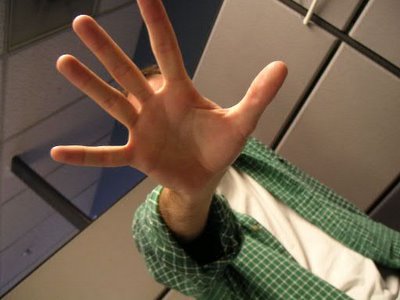I know I've been a bit gloomy since my unheralded return to the blogosphere (does anyone still use that term? Am I like the old guy trying too hard to be hip around the young kids but making an ass of himself using long-dead lingo?), but it's just a phase. I'll get through it, to be sure. I always do. It's just that periodically all my various biorhythmic cycles seem to hit their trough simultaneously which reinforces their amplitude instead of canceling each other out and leaving me my usual level, stable self.
In the meantime, I'm going to Gore-ify you for another moment, so brace yourselves.
Word is out this week that, yes, things continue to get worse. The arctic sea ice reached its annual low on Sept 16th, which isn't unusual by itself. What's terrifying is that it melted back to a record-shattering minimum of about 1 million square miles. The previous low was 1.5 million sq miles back in 2005. That's the lowest since records began and puts the melt roughly 1 million sq miles more than the 25-year average. An extra area larger than Texas and Alaska combined, melted away this year.
Holy god. Ok, it's true, the fabled North-West Passage was ice-free which raises the possibility of actual commercial shipments along a route that cuts the voyage between London and Tokyo to 9,950 miles instead of the 14,300 through the Panama Canal. But still.
Ok, it's true, the fabled North-West Passage was ice-free which raises the possibility of actual commercial shipments along a route that cuts the voyage between London and Tokyo to 9,950 miles instead of the 14,300 through the Panama Canal. But still.
The problem here is many-fold. Like so many of the systems we're fucking up, this one is a nasty feedback loop. The more ice melts, the less there is to reflect solar energy back out to space. So the more dark sea exposed, the more heat is absorbed by the warming ocean, making it harder for ice to form. And the latest numbers show that there's already less sea ice in the Arctic than most climate models project for the year 2050.
Aside from the increased wave erosion and melting permafrost, all the arctic animals reliant on pack ice are threatened. Walruses keep their calves on the sea ice, but feed in the shallow waters near shore. When the ice and shore are nowhere near each other, the calves are abandoned or the mothers starve.
Polar bears, too, as we all know by now, also rely on sea ice to hunt. More and more are disappearing, unable to swim back to shore or drowning trying to reach the edge of the shrinking ice to begin with. USGS scientists predicted 2 weeks ago that two-thirds of the world's polar bears will have vanished within 40 years, including all of the Alaskan population.
I think I'm feeling a little of that whirling dervish dizziness that sets in when things seem to reel out of control around you, leaving you helplessly stumbling sideways with sickening vertigo, panting and befuddled, with nothing to be done but plopping down and waiting for it to end.
Friday, September 21, 2007
Blue windows behind the stars
Posted by Zach at 7:23 PM
Subscribe to:
Post Comments (Atom)

2 Comments:
The melt is record-breaking, sure; but the records themselves are only about 30 years old.
Well sure -- they didn't have terribly accurate figures before the age of satellites; the record only goes as far back as their reliable and comprehensive data. And I was remiss in leaving that part out.
But I don't think I'm being terribly alarmist about this. Despite the variability year-to-year, there is a lot of andecdotal evidence dating back much further in the form of ships logs and eyewitness accounts that indicate that the arctic sea ice has been shrinking and getting thinner for a while, as well as breaking up up sooner and freezing over later.
Post a Comment